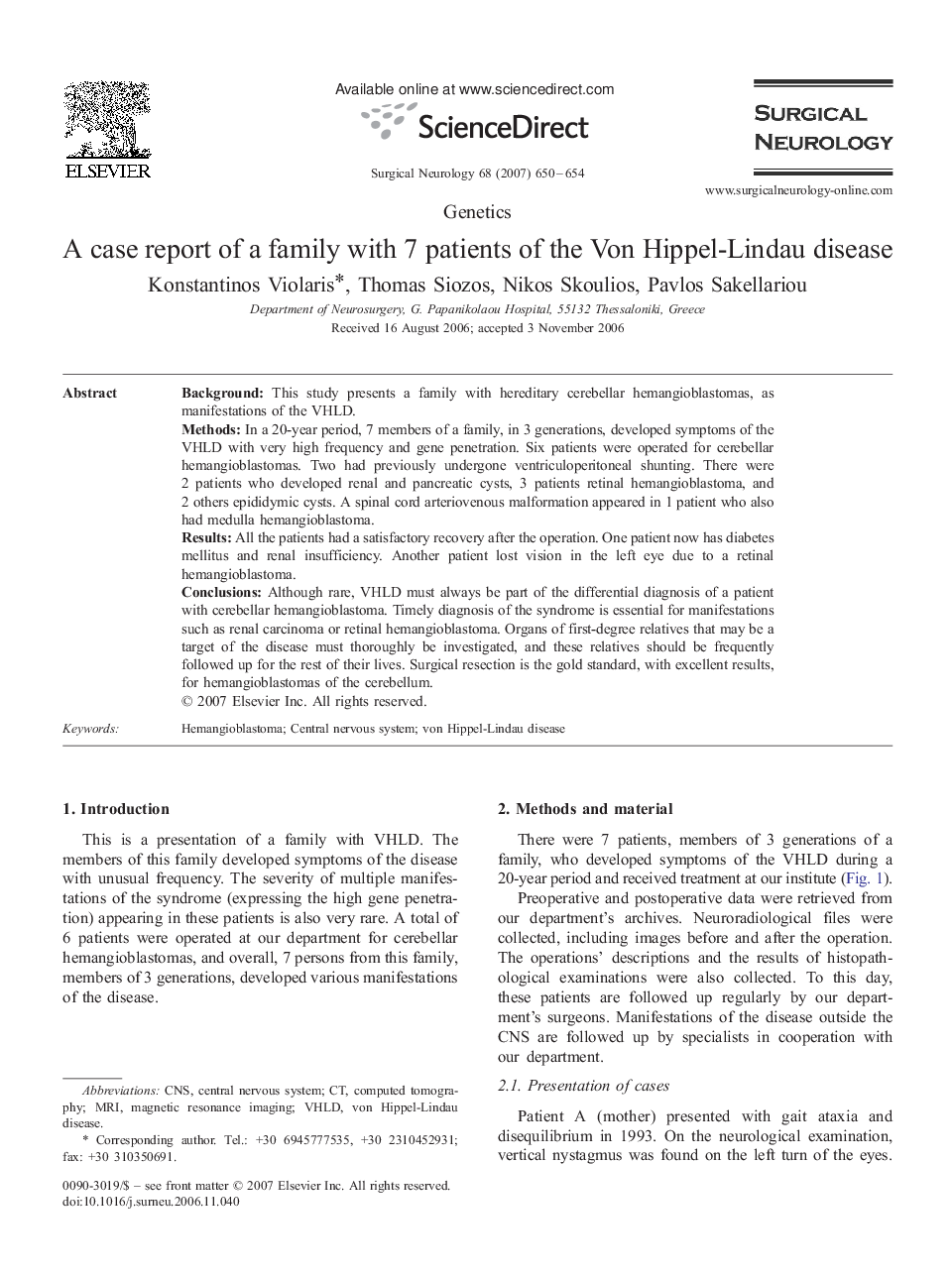| Article ID | Journal | Published Year | Pages | File Type |
|---|---|---|---|---|
| 3093224 | Surgical Neurology | 2007 | 5 Pages |
BackgroundThis study presents a family with hereditary cerebellar hemangioblastomas, as manifestations of the VHLD.MethodsIn a 20-year period, 7 members of a family, in 3 generations, developed symptoms of the VHLD with very high frequency and gene penetration. Six patients were operated for cerebellar hemangioblastomas. Two had previously undergone ventriculoperitoneal shunting. There were 2 patients who developed renal and pancreatic cysts, 3 patients retinal hemangioblastoma, and 2 others epididymic cysts. A spinal cord arteriovenous malformation appeared in 1 patient who also had medulla hemangioblastoma.ResultsAll the patients had a satisfactory recovery after the operation. One patient now has diabetes mellitus and renal insufficiency. Another patient lost vision in the left eye due to a retinal hemangioblastoma.ConclusionsAlthough rare, VHLD must always be part of the differential diagnosis of a patient with cerebellar hemangioblastoma. Timely diagnosis of the syndrome is essential for manifestations such as renal carcinoma or retinal hemangioblastoma. Organs of first-degree relatives that may be a target of the disease must thoroughly be investigated, and these relatives should be frequently followed up for the rest of their lives. Surgical resection is the gold standard, with excellent results, for hemangioblastomas of the cerebellum.
